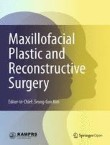Cranial bone regeneration according to different particle sizes and densities of demineralized dentin matrix in the rabbit model
The objective of this study was to place bone graft materials in cranial defects in a rabbit model and compare their bone regenerating ability according to the size and density of demineralized dentin matrix (...
